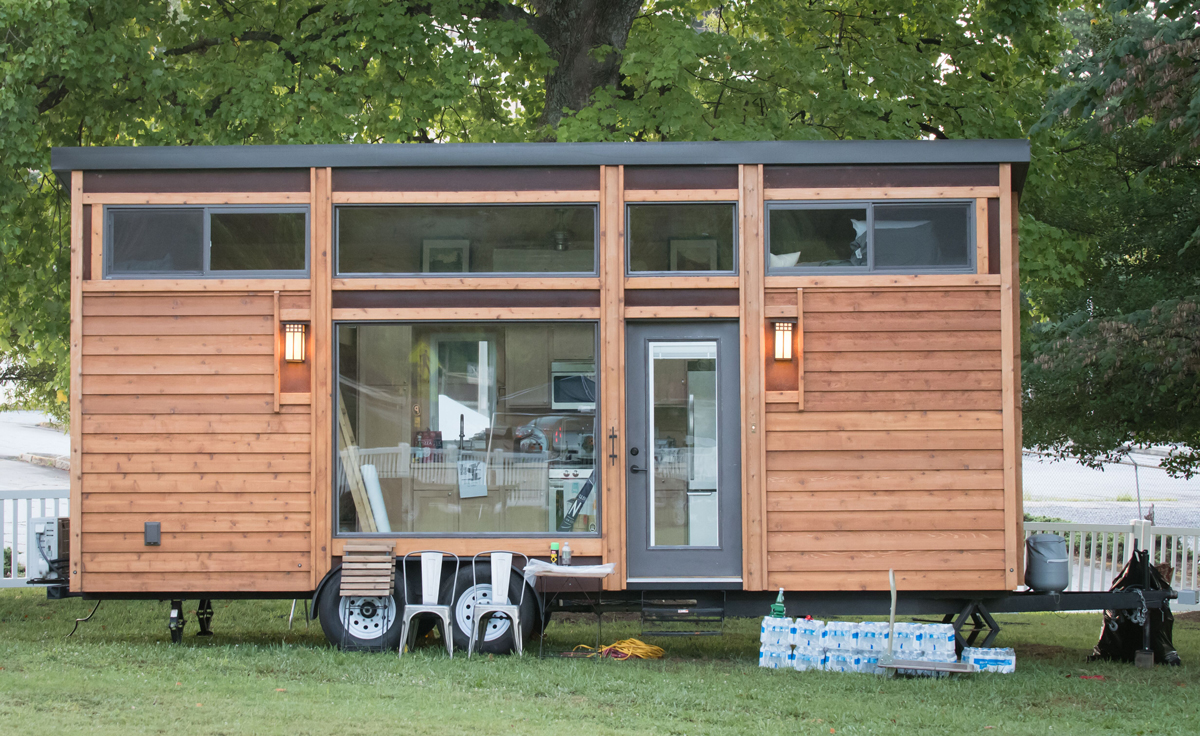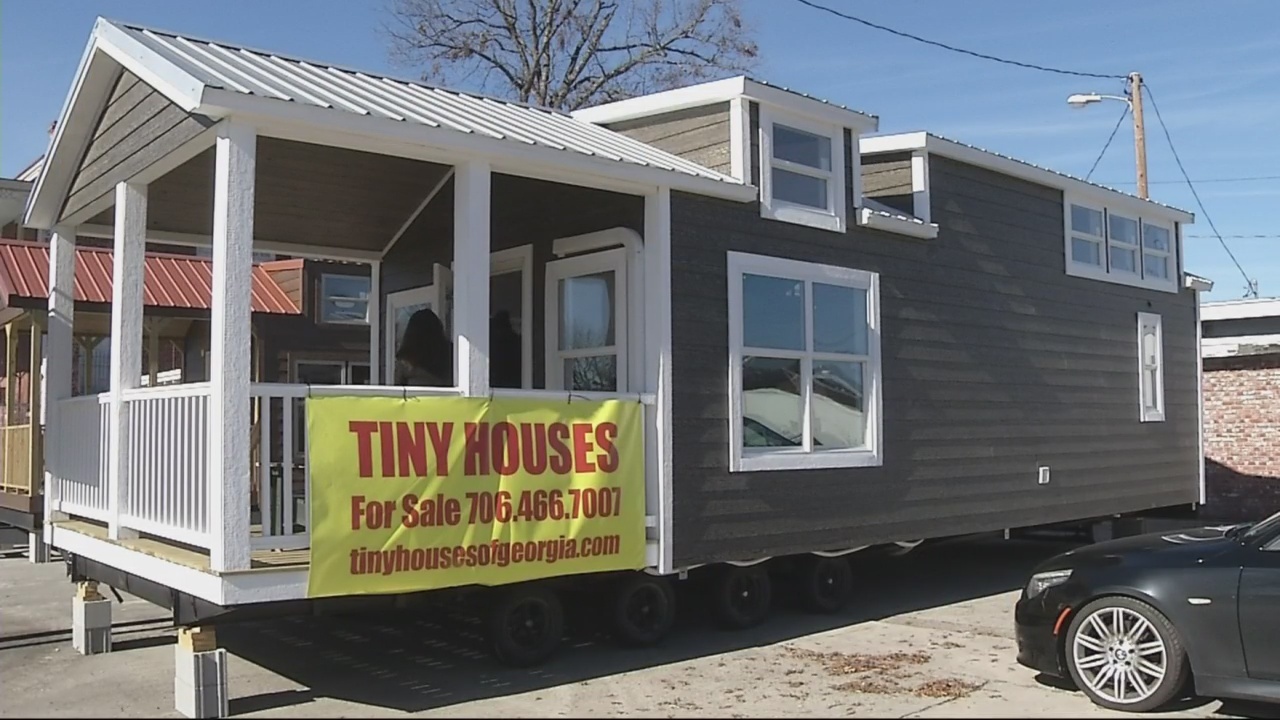In Georgia, you can put a tiny house on your own land or in a community. You will need to check with your local zoning ordinances to see if there are any restrictions on where you can place your tiny house. Some communities have rules about how close your tiny house can be to other structures and property lines.
There may also be minimum size requirements for houses in your area.
We get a lot of questions about where people can put a tiny house in Georgia. The most common question is whether or not you can have a tiny house on wheels (THOW) as your primary residence. Unfortunately, the answer is no.
You cannot have a THOW as your primary residence in Georgia. However, you may be able to place your THOW on property that you own that is zoned for agricultural or forestry uses. For more information on this, please check out our blog post here.
If you’re looking for ideas on where to put a tiny house in Georgia, we’ve got you covered! Here are four great options:
1. On vacant land that you own – This is probably the most obvious option, but if you have some land that’s just sitting there unused, why not put a tiny house on it?
You could even build a small accessory dwelling unit (ADU) to rent out and offset the costs of owning the property.
2. In an RV park – If you don’t own any land but still want to live in a THOW, one option is to look for RV parks that allowtiny houses. These are usually located outside of city limits and tend to be more affordable than other housing options.
3 . On someone else’s property – If you know someone who owns land and they’re okay with it, another option is to place your THOW on their property. Just make sure to get everything in writing so there’s no confusion later on down the road.
4 . In a co-housing community – There are several co-housing communities popping up around the country that welcometiny houses (and sometimes even RVs). These communities typically provide shared amenities like kitchens, laundry facilities, and communal spaces which can make living ina tiny home much easier (and more fun!).

Credit: www.atlantamagazine.com
Can I Put a Tiny House on My Property in Georgia
If you’re considering building a tiny house in Georgia, there are a few things you need to know. First, the state has no specific regulations regarding tiny houses. This means that whether or not you can put a tiny house on your property will depend on your local zoning laws.
You’ll need to check with your city or county to see if they allowtiny houses on residential properties.
Even if your local laws do allow tiny houses, there are still some other factors to consider before moving forward with your plans. For example, most homeowner’s associations have strict rules about the size and type of homes that can be built on their properties.
So even if you own your land outright, you may not be able to build a tiny house if it doesn’t meet the association’s guidelines.
Another thing to keep in mind is that even though Georgia doesn’t have any specific regulations for tiny houses, that doesn’t mean that all utilities will be readily available. Many rural areas don’t have access to public water or sewer lines, so you would need to install a private septic system and well if you want to live in atiny house in those areas.
Additionally, electric and gas hookups may not be available in all parts of the state, so you may need to rely on alternative sources of power like solar panels or generators.
Despite these challenges, there are still many people who successfully live intiny houses in Georgia. If you do your research and work with knowledgeable professionals, it is possible to build the Tiny House of your dreams in this beautiful state!
How Do I Find Out If There are Any Zoning Restrictions for Tiny Houses in My Area
There are a few ways to find out if there are any zoning restrictions for tiny houses in your area. One way would be to contact your local zoning office and ask them directly. Another way would be to look up your city or county’s zoning code online, which should list any restrictions on housing size or density.
Finally, you could reach out to a tiny house builder or consultant in your area and ask them if they are aware of any such restrictions.
What Type of Foundation is Best for a Tiny House in Georgia
There are a few factors to consider when choosing the best foundation for your tiny house in Georgia. The first is the climate. Georgia has a hot, humid climate which can cause issues with traditional foundations made of wood or concrete.
Instead, you may want to consider using a metal or plastic foundation that won’t be affected by the weather. The second factor is the ground itself. If you have sandy soil, it’s important to choose a foundation that will be able to support the weight of your tiny house without sinking or shifting.
Finally, you’ll need to decide how permanent you want your foundation to be. If you plan on moving your tiny house around often, then a trailer-based foundation might be best. But if you want your tiny house to stay in one spot for a while, then a more permanent foundation like poured concrete or piers would be a better choice.
How Can I Insulate My Tiny House to Deal With the Hot Summers And Cold Winters in Georgia
One of the great things about owning a tiny house is that you can easily customize it to deal with any type of weather. If you live in a place with hot summers and cold winters, like Georgia, then insulating your tiny house is a must. Here are some tips on how to insulate your tiny house so that it can withstand the extreme temperatures:
1. Use spray foam insulation. Spray foam insulation is one of the most effective ways to insulate your tiny house. It will create a barrier between the outside air and your living space, keeping your home cool in the summer and warm in the winter.
2. Add extra insulation to the ceiling. The ceiling is one of the biggest places where heat can escape from your home, so adding extra insulation there will help keep things cooler in the summer and warmer in the winter.
3. Install double-paned windows.
Double-paned windows are another great way to keep heat out in the summer and warmth inside during winter months. They work by trapping air between two layers of glass, which acts as an insulator against temperature changes outside.
What are Some Considerations for Siting a Tiny House in Georgia to Maximize Privacy And Take Advantage of Views
When siting a tiny house in Georgia, there are a few considerations to keep in mind in order to maximize privacy and take advantage of views. First, consider the orientation of the house on the property. For privacy, it is best to have the long side of the house facing away from any neighboring properties or roads.
This will also help to take advantage of any scenic views. Another consideration is the placement of windows. Again, for privacy reasons, it is best to avoid having windows facing neighbor’s houses or busy streets.
However, placing windows on opposite walls will help to maximize natural light and provide cross-ventilation for cooling in the summer months.
A NEW Tiny House Village- Pocket neighborhoods hit ATL!
Conclusion
If you’re considering building a tiny house in Georgia, there are a few things to keep in mind. First, you’ll need to find a place to put it. You can park your tiny house on your own property, or you can look for a community that welcomes tiny houses.
Once you’ve found a spot, you’ll need to get permits from your local government. Then, you can start building! Keep in mind that Georgia has some specific requirements for tiny houses, so be sure to do your research before getting started.

